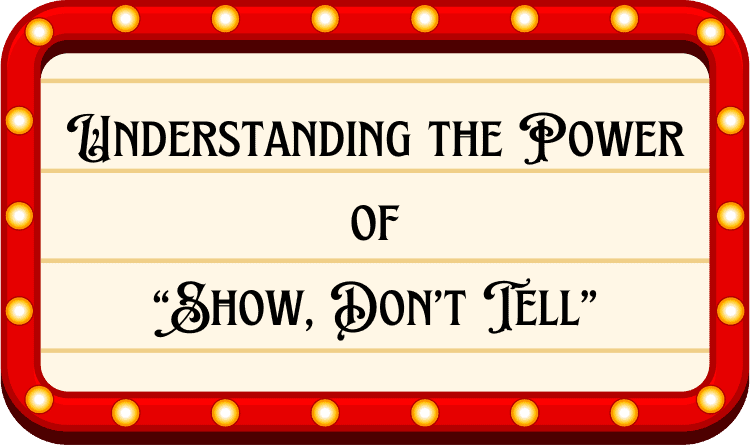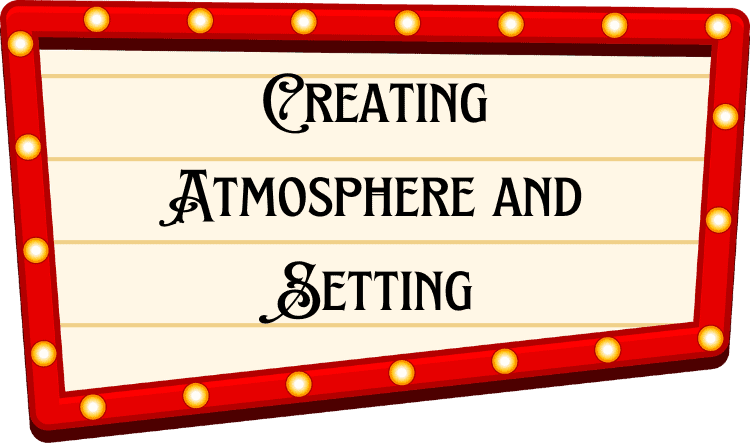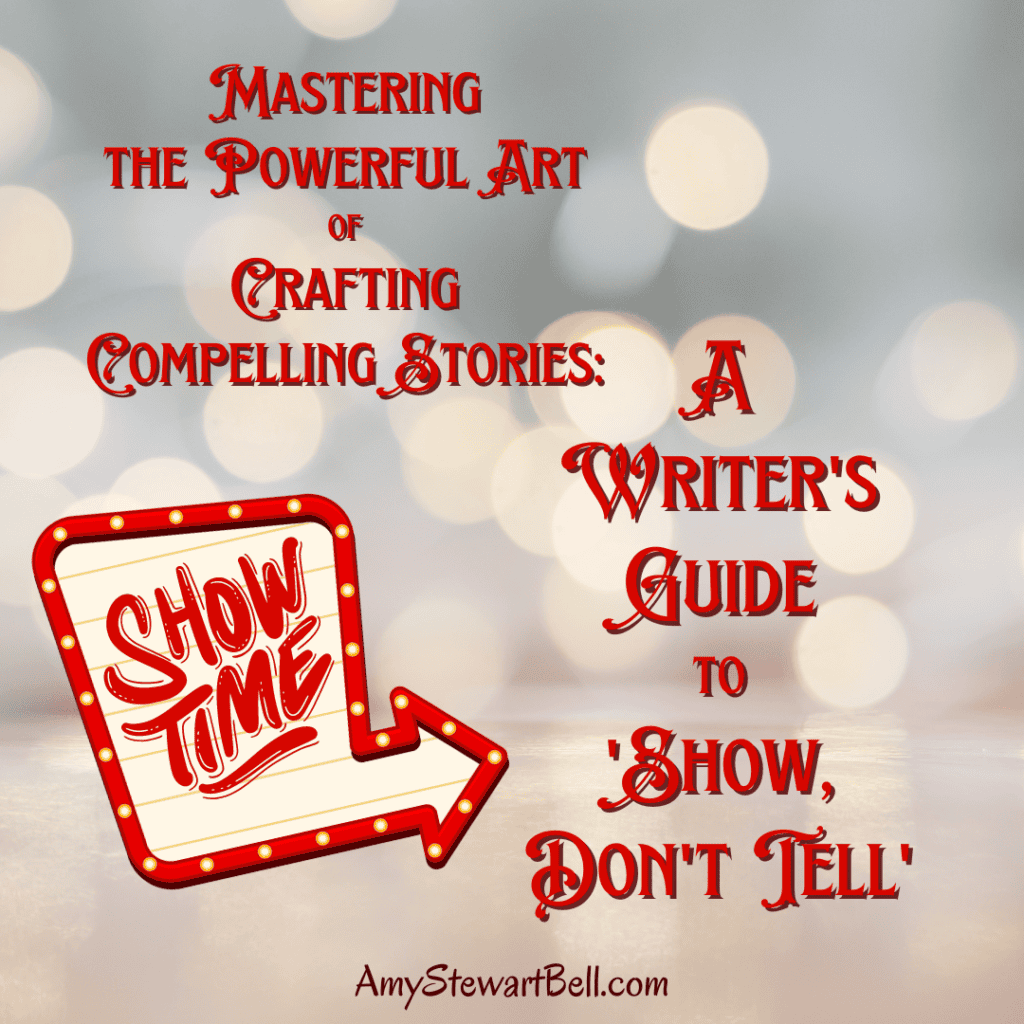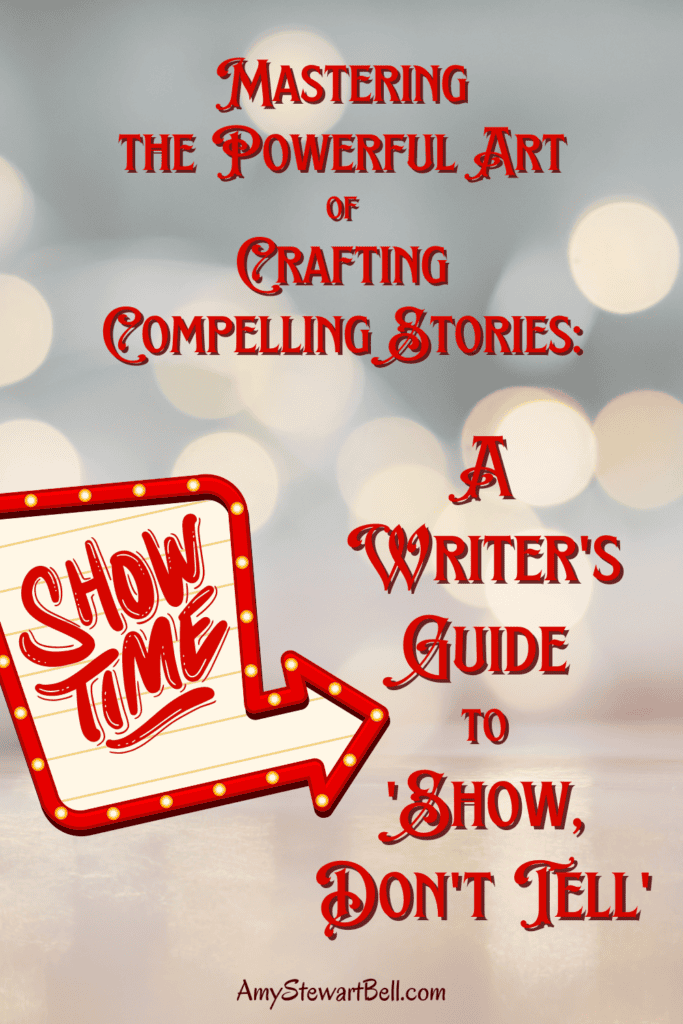Crafting Compelling Stories: Understanding the Power of ‘Show, Don’t Tell’ in Writing

The age-old writing advice of “show, don’t tell” is like the literary version of saying “actions speak louder than words” – but with more metaphors and fancy adjectives thrown in for good measure.
Imagine you’re writing a story about a character who is angry. You could simply say, “John was angry.” Boring! Instead, show us his anger through clenched fists, furrowed brows, and maybe even a few choice curse words thrown in for good measure. That way, your readers can feel John’s anger rather than just being told about it.
Descriptive writing is where the magic happens. Paint a vivid picture with your words so that your readers can see, hear, smell, taste, and touch what you’re describing. It’s like giving them a front-row seat to the movie playing out in your mind.
Storytelling is all about engaging your audience and taking them on a journey. Use ‘showing’ techniques to create suspense, build tension, and evoke emotions. Make them laugh, make them cry – just don’t bore them with plain old telling.
So next time you sit down to write, remember: show us the juicy details instead of telling us about them. Your readers will thank you for it!
Crafting Compelling Stories: Painting Vivid Pictures with Words
Techniques to Show Emotions and Actions

Diving into the colorful world of descriptive writing, we’re about to paint vivid pictures with words that will make your readers feel like they’re right in the heart of the action!
When it comes to showing emotions and actions in your writing, it’s all about using descriptive writing techniques that bring your words to life. Think of yourself as a literary artist, crafting scenes that jump off the page and straight into your readers’ minds.
Instead of simply stating that a character is sad, describe how their shoulders slump, tears glisten in their eyes, and their voice quivers with emotion. This way, you’re letting the reader experience the emotion firsthand rather than just being told about it.
If your character sheds a tear, you want it to roll down the cheeks of your readers.
-Amy Stewart Bell
Now let’s talk action scenes! To create heart-pounding action sequences in your writing, use dynamic verbs and sensory details to immerse your readers in the moment. Make them feel the rush of adrenaline as swords clash, fists fly, and explosions rock the scene. Push your reader, with your words, to the edge of the cliff, toes hanging off, fingertips digging in for dear life as they await the next obstacle coming their way.
Don’t tell them what happened, put them there. Let them see the sun slithering down behind mountains in the distance and feel the cold creeping in to settle around them. Let the howls of a pack of way-too-close coyotes send chills down their spine. Make them tense and tighten as they feel the wind picking up, threatening to cause them to lose their tenuous grip on the side of the mountain wall with the potential final scream from the fall to their death.
And don’t forget about vivid storytelling techniques! Use rich imagery, metaphorical language, and detailed descriptions to transport your readers to different worlds and make them feel like they’re part of the story.
So go ahead, unleash your inner wordsmith, and start painting those vivid pictures with words. Your readers will thank you for taking them on an unforgettable literary journey!
Crafting Compelling Stories: Breathing Life into Characters
Showing Personality Traits and Motivations

Breathing life into characters is like giving them a spa day for their personalities. You want your characters to sparkle and shine on the page, not just be two-dimensional stick figures with dialogue.
When it comes to character development in writing, think of your characters as onions (not ogres). They have layers! Showcasing their emotions, quirks, and motivations adds depth to your story and is essential for Crafting Compelling Stories.
Imagine if your characters were at a party – what would they be doing? Are they the life of the party, cracking jokes and dancing like nobody’s watching? Or are they the wallflower sipping their drink quietly, observing everyone else? What your characters do in all situations they find themselves in says so much about them and can lead your readers down the road you intend.
By showing character emotions through actions and dialogue, you can make them relatable and engaging. Maybe your protagonist has a fear of spiders that makes them freeze in terror when one scuttles across the floor. Or perhaps your antagonist’s motivation stems from a childhood betrayal that fuels their desire for revenge.
So go ahead, let your characters shine bright like diamonds on the page. Give them personality traits that make readers root for them or boo them offstage. After all, who wants to read about bland characters when you can have a cast of vibrant personalities stealing the spotlight? Your dynamic characters can help you in crafting compelling stories.
Crafting Compelling Stories: Creating Atmosphere and Setting
How to Show the Reader Where They Are

Setting the scene — It’s like being the interior decorator of your story. But instead of picking out throw pillows, you’re painting a vivid picture with words.
When it comes to writing setting descriptions, think of yourself as a literary tour guide. You want to show the reader around without boring them to tears. No one wants a 10-page essay on the history of that quaint little cafe your characters are in.
Use atmospheric writing techniques to sprinkle details like confetti – sparingly but effectively. Let the reader smell the freshly baked croissants, hear the clinking of coffee cups, and feel the cozy warmth enveloping them.
Creating immersive worlds in fiction is all about engaging the senses. Don’t just tell your readers they’re in a spooky forest; make them feel like they’re being watched by unseen eyes, shivering from an icy breeze, and stumbling over gnarled roots.
So go ahead, weave your magic with words, and transport your readers to places only your imagination can take them! Create an atmosphere for crafting compelling stories.
Crafting Compelling Stories: The Subtle Art of Dialogue
Using Conversations to Show Relationships and Dynamics

Writing dialogue is like eavesdropping on characters without being creepy. Crafting realistic conversations in writing is like being a puppeteer, pulling the strings of emotions and dynamics between characters. Dynamic dialogue is a huge part of crafting compelling stories.
Imagine two characters chatting away in your story. Instead of just saying “she said” or “he said”, sprinkle in some dialogue tags that show those juicy emotions. Picture this: “I can’t believe you ate the last cookie,” she exclaimed, her eyes widening with betrayal.
Dialogue isn’t just about words; it’s about the dance between characters. Show their relationships through banter, tension, or even awkward silences. Think of it as a verbal tango where each word is a step toward revealing their true selves.
So next time you’re writing dialogue, remember to add those spicy tags and let your characters’ conversations sizzle with life, crafting compelling stories from the inside out!
Conclusion: Elevate Your Writing by Mastering ‘Show, Don’t Tell’ and Captivate Your Readers Every Time!
LET’S CONNECT!
There are many ways to connect withAmy Stewart Bell. We would love to know what you think and any of the topics we offer. We welcome your comments and want to interact with you!
If you haven’t yet, grab your copy ofOnce Captured, the first in Amy’s Captive Series. And be on the watch for the second in the series, Uncharted Captivity, to drop!
You can also connect in other areas. Join us on Instagram@AmyWritesAlland on Facebook@AmyWritesAll.
Be sure to join our community newsletter and you will get even more inside info!







